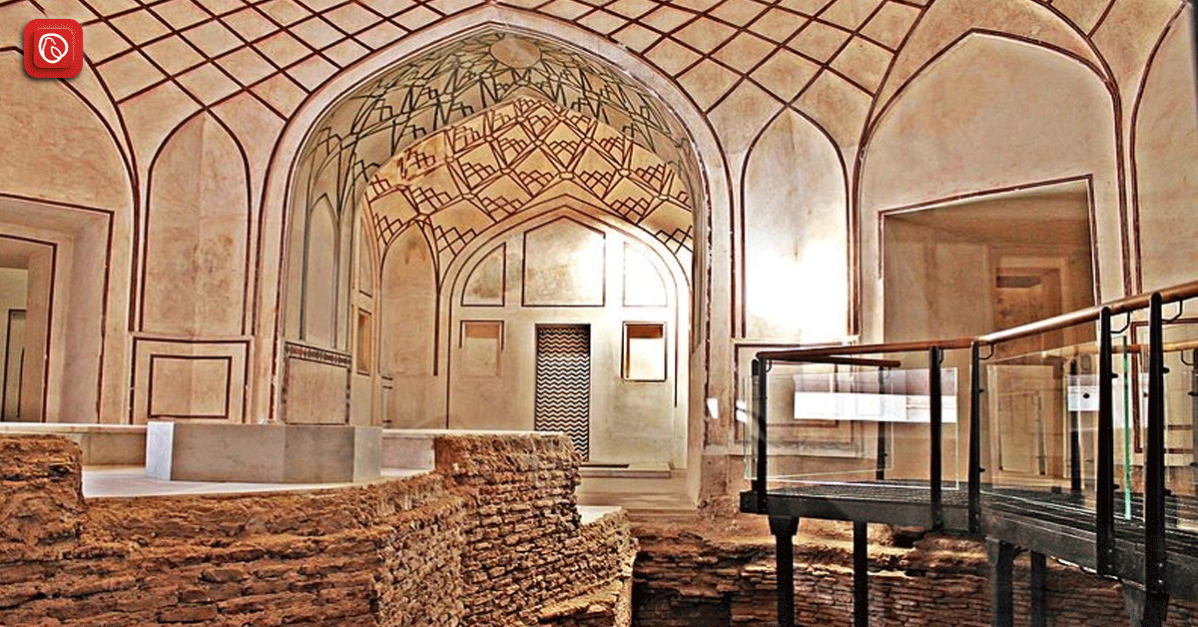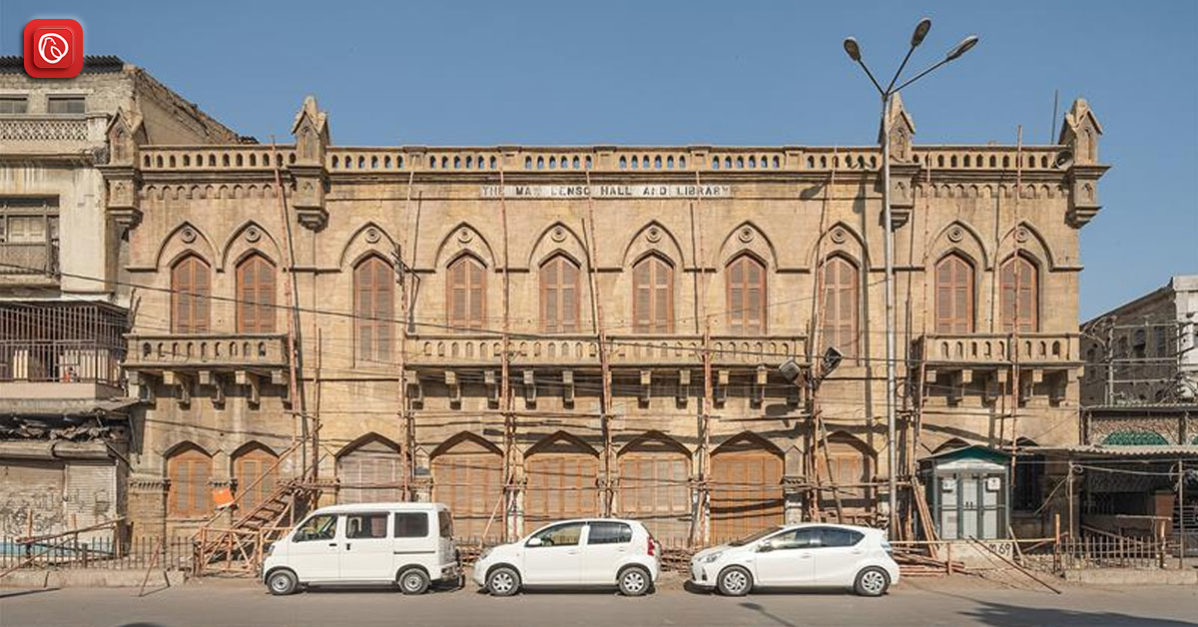Shahi Hammam, commonly known as the Wazir Khan Hammam, is a distinguished architectural marvel nestled within the captivating Walled City of Lahore, Pakistan. Dating back to its construction in 1635, during the splendid Mughal era under the patronage of Emperor Shah Jahan, this Turkish bath stands as a testament to the region’s rich cultural heritage. Its location within the ancient city walls adds to its allure, making it a focal point of historical significance and architectural brilliance.
The establishment of Shahi Hammam in 1635 was a testament to the opulence and grandeur characterising the Mughal reign. Commissioned by Emperor Shah Jahan, the hammam’s construction reflected the Mughals’ commitment to architectural excellence and cultural refinement. It served as more than just a utilitarian bathing space, embodying a synthesis of art, functionality, and cultural significance within the heart of Lahore.
In this comprehensive blog, Graana.com will explore the rich history, layout, architectural brilliance, restoration efforts, and the broader cultural significance of Shahi Hammam.
Shahi Hammam History
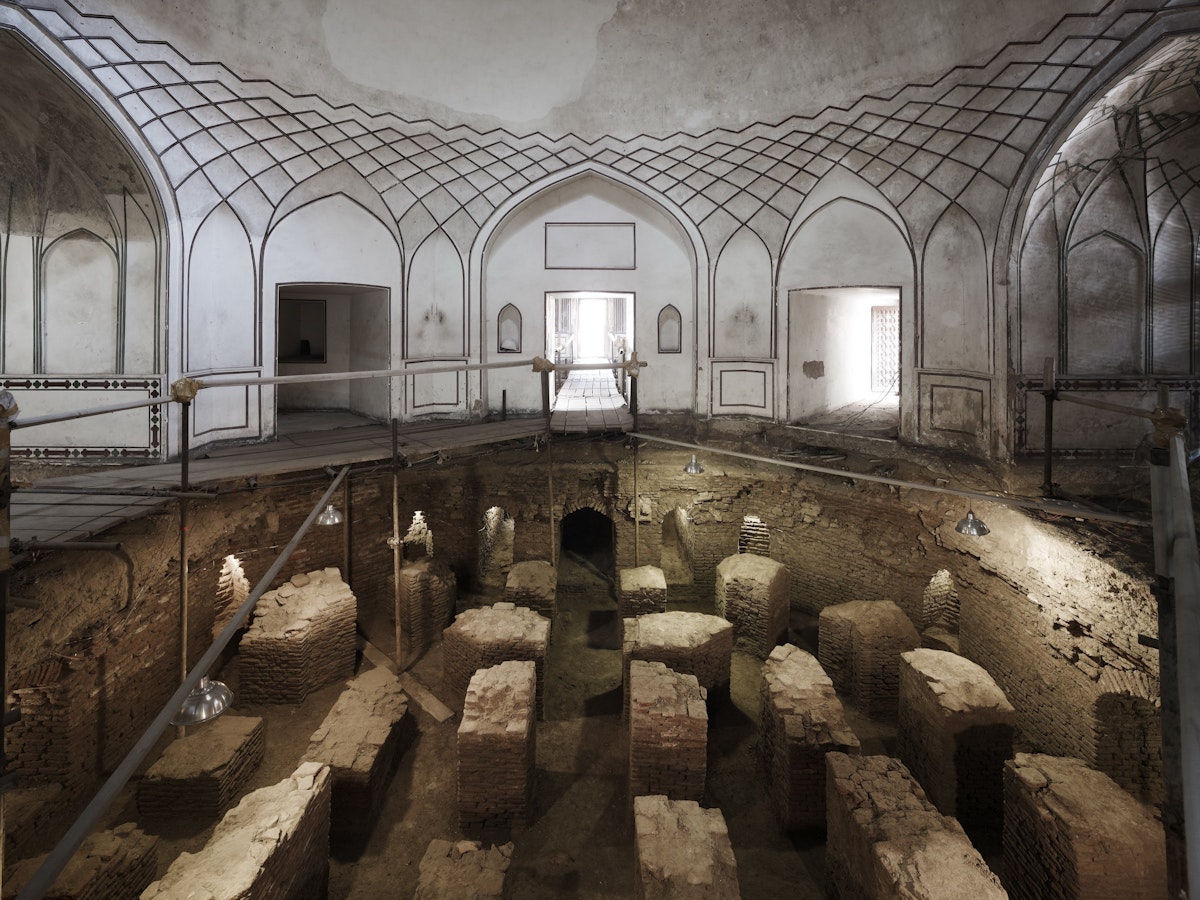
The history of Shahi Hammam, also known as the Wazir Khan Hammam, is a fascinating journey that unfolds against the backdrop of the Mughal era in Lahore, Pakistan. Constructed in 1635 during the reign of Emperor Shah Jahan, this Turkish bath stands as a testament to the architectural brilliance and cultural richness of the time.
The visionary behind Shahi Hammam was Ilam-ud-din Ansari, the Chief Physician to the Mughal Court, affectionately known as Wazir Khan. The hammam was not merely a place for bathing but served a higher purpose. It was established as a waqf, an endowment, intended to support the maintenance of the nearby Wazir Khan Mosque. This dual-purpose construction exemplified the Mughal commitment to combining aesthetics with social welfare.
Over the centuries, Shahi Hammam experienced transformations reflective of the changing times. During the decline of the Mughal Empire in the 18th century, the baths fell into disuse. In the British colonial period, the building underwent adaptive reuse, serving various roles such as a school, dispensary, recreational centre, and even a municipal office. This versatility underscores the resilience of Shahi Hammam in adapting to evolving societal needs.
Excavations

Excavations carried out during recent restoration efforts revealed significant historical insights. Parts of the original structure were found to have been demolished, likely to make way for the reconstruction of the nearby Delhi Gate building in the 1860s. These findings add layers to the historical narrative, highlighting the dynamism of Lahore’s architectural landscape.
Shahi Hammam is not just a relic of the past; it is the last remaining Mughal era hammam in Lahore. It stands as a living testament to the Mughals’ appreciation for both functionality and artistic expression. The layout, which includes the Jama khana (dressing area), nim garm (warm baths), and garm (hot baths), reflects the meticulous planning characteristic of Mughal architecture.
In recent years, Shahi Hammam underwent extensive restoration, led by the Aga Khan Trust for Culture and the Walled City of Lahore Authority. This restoration, completed between 2013 and 2015, aimed not only to preserve architectural integrity but also to uncover and protect Mughal-era frescoes adorning the walls.
UNESCO recognized the success of this restoration effort in 2016, honoring the project with an “Award of Merit” for restoring Shahi Hammam to its “former prominence.”
Shahi Hammam Architecture
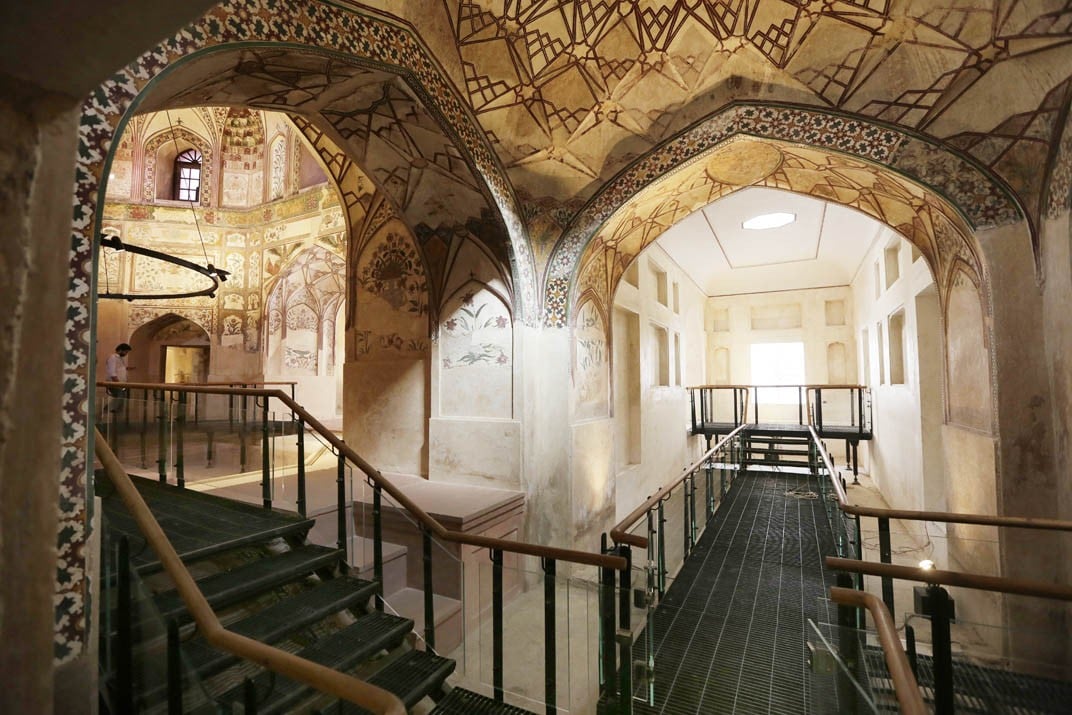
The architectural layout of Shahi Hammam is a symphony of purposeful design and meticulous segmentation. Comprising three integral parts, the hammam unfolds its grandeur through the jama khana (dressing area), nim garm (warm baths), and garm (hot baths). Each section served a specific function, catering to the holistic bathing experience typical of Mughal-era hammams.
The jama khana, functioning as the dressing area, provided a transitional space for visitors entering the hammam. The nim garm offered warm baths, creating a relaxing atmosphere, while the garm, housing the hot baths, added therapeutic dimensions to the bathing ritual. This careful segmentation reflected not only the functional efficiency of the space but also the societal norms of gender-segregated bathing during that period.
Persian Influence and Natural Illumination

Shahi Hammam’s architectural inspiration draws heavily from Persian traditions. The entrance of the main dome, reminiscent of Persian architecture, allows the penetration of natural light, creating an ethereal ambiance within. This ingenious use of light not only illuminated the interiors but also served a dual purpose of ventilation, ensuring a comfortable bathing environment.
In adherence to Persian hammam design, Shahi Hammam embraced the concept of using sunlight as a primary source of illumination. This design choice not only showcased the Mughals’ reverence for Persian aesthetics but also demonstrated an innovative approach to architectural functionality.
Gender Segregation and Functional Spaces
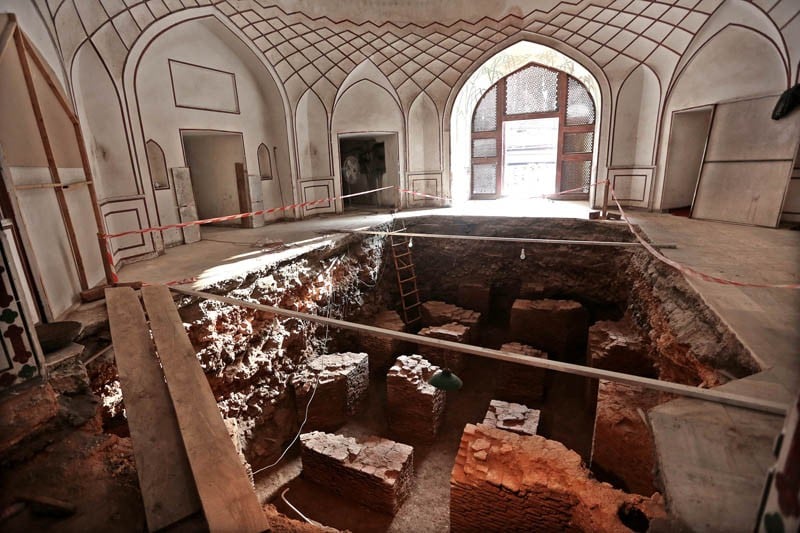
One of the distinguishing features of Shahi Hammam’s architecture is its adherence to gender segregation. The baths were meticulously designed to accommodate both men and women, with specific days allocated for each gender. The inclusion of reception chambers and small prayer rooms added a cultural and spiritual dimension to the bathing experience.
The functional spaces within Shahi Hammam went beyond mere bathing areas. The layout included massage places, sweat rooms, and expansive resting chambers. Such multifaceted offerings highlighted the architectural prowess in creating a holistic environment catering to various aspects of personal well-being.
Mughal Frescoes and Ornate Details

The interior walls of Shahi Hammam bear witness to the artistic finesse of the Mughal era. Mughal frescoes, showcasing intricate patterns, floral motifs, and depictions of birds and winged angels, adorn the walls. The roof, intricately decorated with a legion of flowers either entangled or arranged in vases, adds to the visual splendour of the space.
The incorporation of ornate details in the form of frescoes not only served an aesthetic purpose but also reflected the Mughals’ appreciation for artistry. These detailed embellishments transformed Shahi Hammam into a sensory experience, where architecture and art converged seamlessly.
Restoration and Preservation Efforts of Shahi Hammam
In recent years, Shahi Hammam underwent an extensive restoration process, led by the Aga Khan Trust for Culture and the Walled City of Lahore Authority. The restoration aimed not only to preserve the architectural integrity of the hammam but also to uncover and protect Mughal-era frescoes that adorned its walls. The successful restoration efforts, recognised by UNESCO, have reinstated Shahi Hammam to its former prominence.
Excavations and Discoveries
The restoration went beyond surface-level improvements, unravelling hidden facets of Shahi Hammam’s past. Excavations unearthed a sophisticated water heating system, drainage intricacies, and remnants of hypocausts beneath the floor. These discoveries offer a fascinating glimpse into the functional aspects of the hammam during the Mughal era, enhancing our understanding of historical bathing practices.
Shahi Hammam in the Akbar Era
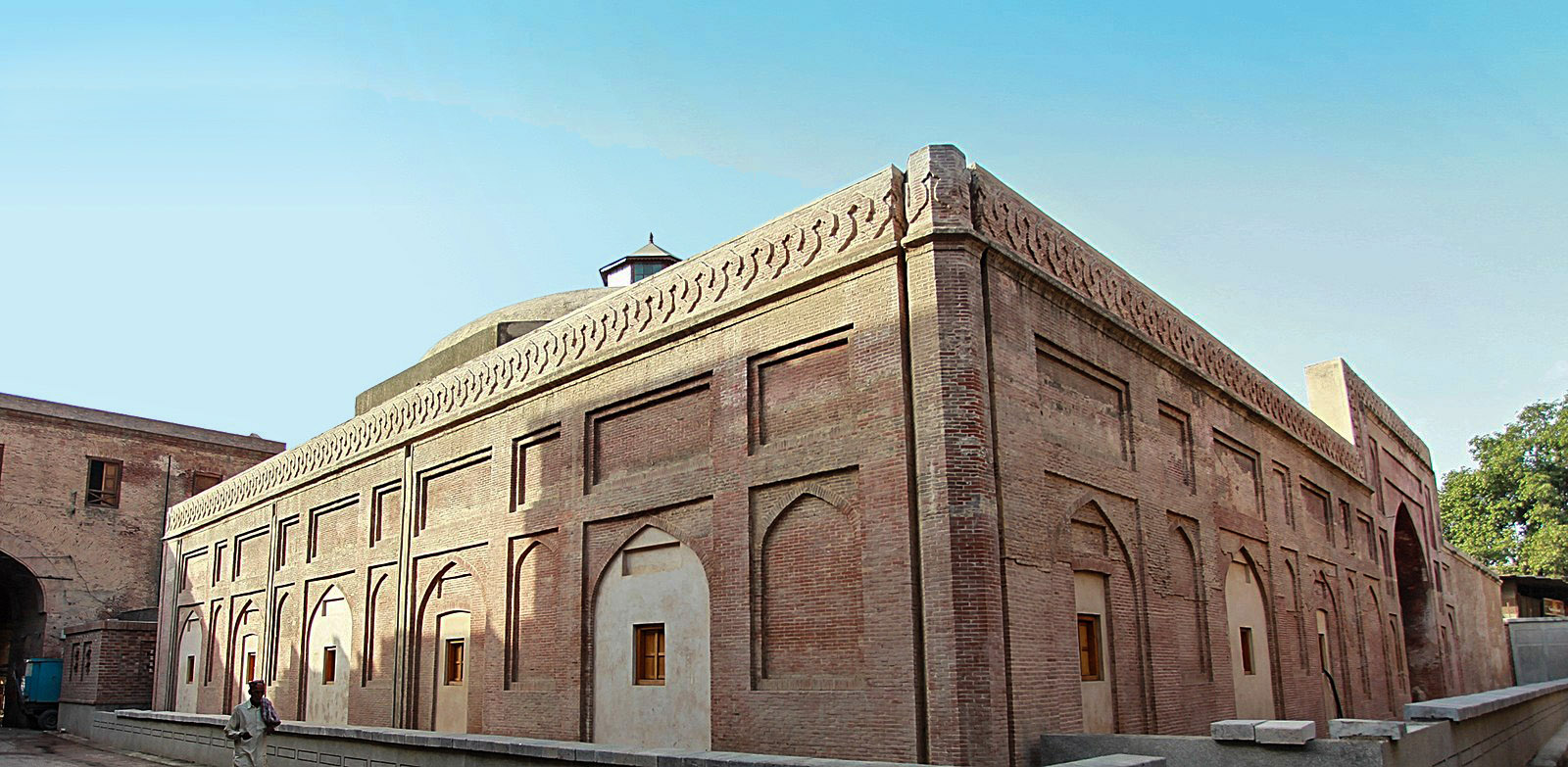
While Shahi Hammam emerged during Shah Jahan’s reign, it’s imperative to contextualise its existence within the broader history of Persian-style hammams introduced during Akbar’s rule. Though these baths didn’t attain the same popularity as in Persia, they left an indelible architectural mark on the Mughal Empire.
Shahi Hammam Timings and Location
For those eager to immerse themselves in this historical haven, Shahi Hammam welcomes visitors from 08:00 to 20:00, seven days a week. Conveniently located within the Walled City, near the Delhi Gate, it beckons enthusiasts to explore the architectural grandeur and historical resonance of this Mughal-era gem.
Address: Shahi Hammam, Inside Delhi Gate, Walled City of Lahore, Lahore, Pakistan.
Maintenance and Preservation
Preserving Shahi Hammam demanded significant financial investment, with an estimated cost exceeding a million dollars. The Royal Norwegian Embassy generously contributed more than half of the funding, showcasing the importance of international collaboration in cultural heritage conservation. The Walled City of Lahore Authority, in partnership with the Aga Khan Trust for Culture, exemplified the success achievable through public-private partnerships, offering a blueprint for similar endeavours globally.
Conclusion
Shahi Hammam, also known as the Wazir Khan Hammam, is a captivating window into the Mughal era’s grandeur. Constructed in 1635 during the reign of Emperor Shah Jahan, this Turkish bath tells a tale of architectural brilliance and cultural significance. Recently restored, Shahi Hammam not only preserves its historical charm but also invites visitors to experience the timeless beauty of Lahore’s past.
As we stroll through the corridors of Shahi Hammam, the meticulous restoration efforts breathe new life into its ancient walls. The harmonious blend of history and modern preservation creates an immersive journey for all who explore its hallowed halls. Shahi Hammam stands not merely as a relic but as a living testament to Lahore’s enduring cultural legacy, inviting everyone to share in its rich history and architectural splendour.
FAQs about Shahi Hammam
The following are some of the most frequently asked questions about Shahi Hammam:
When was Shahi Hammam built, and who commissioned its construction?
Shahi Hammam was constructed in 1635 during the Mughal era, commissioned by Emperor Shah Jahan.
What purpose did Shahi Hammam serve during its initial construction?
Originally, this Hammam served as a Turkish bath and was established as a waqf, an endowment, to support the maintenance of the nearby Wazir Khan Mosque.
Can visitors explore the interiors of Shahi Hammam, including the bathing areas
Yes, visitors are allowed to explore the interiors of the Hammam, including the jama khana (dressing area), nim garm (warm baths), and garm (hot baths), providing a comprehensive view of Mughal-era bathing facilities.
What notable architectural features reflect the influence of Persian traditions in Shahi Hammam?
The entrance of the main dome, inspired by Persian architecture, allows natural light to penetrate, creating an ethereal ambiance. This design choice aligns with the Persian tradition of using sunlight for illumination in hammams.
How does the restoration of Shahi Hammam contribute to cultural heritage conservation?
The restoration, led by the Aga Khan Trust for Culture and the Walled City of Lahore Authority, aimed to preserve the architectural integrity and uncover Mughal-era frescoes. It serves as a successful example of public-private partnerships in safeguarding cultural heritage.
For more inforamative blogs, visit the Graana Blog.
